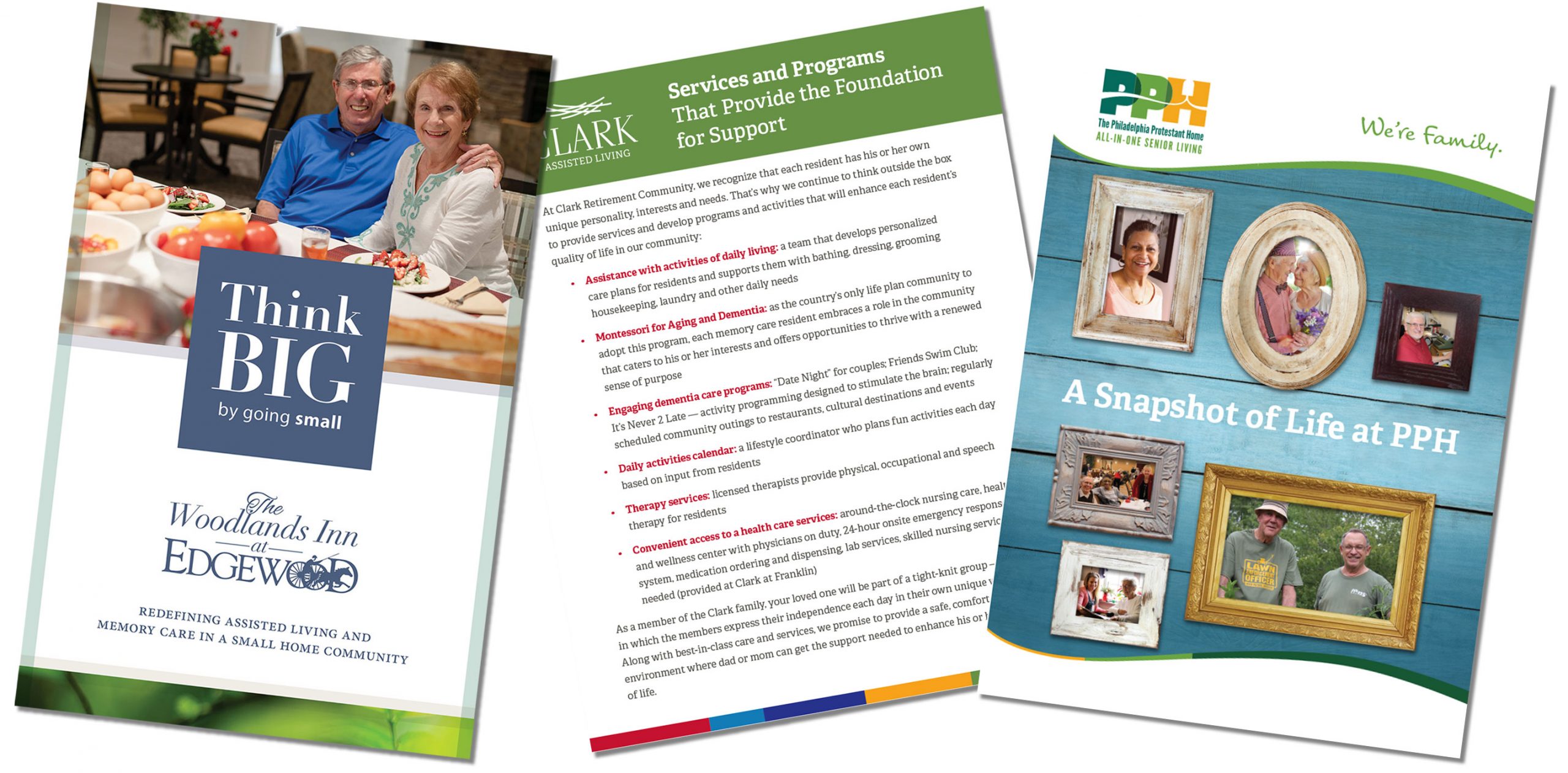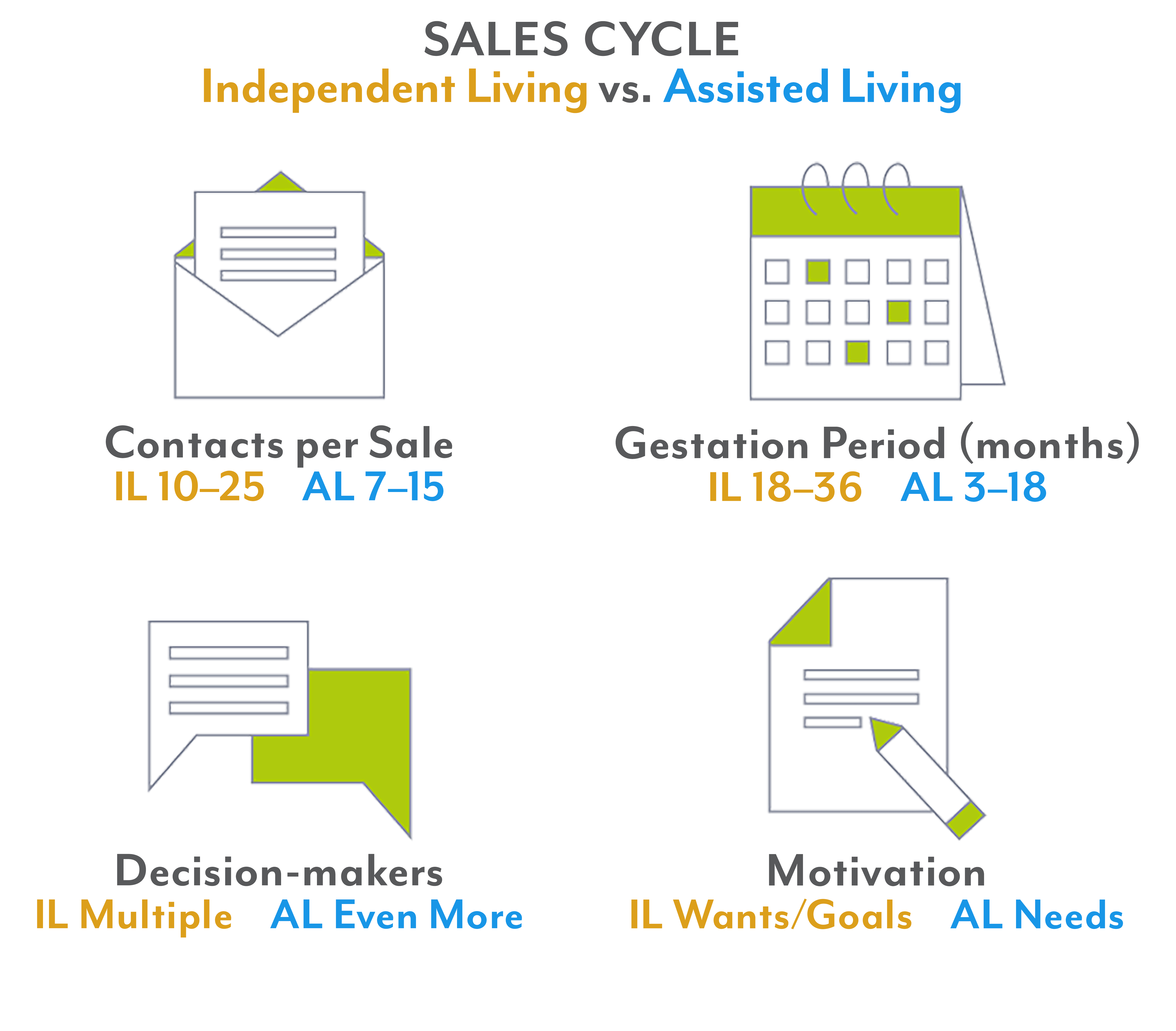Several of our senior living clients have reached out to us for guidance marketing their assisted living (AL) products. They understand that traditional methods of keeping census high have not been enough, and new approaches to marketing AL are needed.
I recently sat down to dissect this trend with Amanda Combs, Creating Results’ Director of Marketing Strategies. During our chat, she provided insights on how marketing strategies for assisted living and independent living (IL) differ from one another, and which tactics work best for marketing AL.
Tips for Developing an Assisted Living Marketing Strategy
For many years, we’ve partnered with our clients to reverse declining census in assisted living communities. Have you been able to identify any trends within the industry that could explain why AL communities have been so negatively impacted?
Amanda Combs: One of the main reasons is because people are healthier and living longer. Because of this, the transition to AL is slower than in years past. Some communities have adapted by offering “enhanced living” to IL residents. This means those residents can receive some assistance with activities of daily living while remaining in independent living. This is causing a void as those residents would’ve normally transitioned to AL.
Additionally, an increasing number of at-home health care services and organizations are competing with traditional AL, along with more for-profit competitors expanding into traditionally not-for-profit market areas. These communities offer appealing a la carte pricing and newer physical spaces.
Why do you think assisted living-specific marketing was not a focus for communities in the past?
AC: In the past, the continuum had traditionally filled AL on its own. Additionally, in the past, there were stronger relationships between communities and health care professionals who actively referred patients to AL communities.
The professional referral process has since become more automated due to technology. As such, those relationships aren’t as strong as they once were. Referrers also have more choices than ever when it comes to referring patients to AL. Assisted living communities now have to not only market to future residents and their families, but to professional referrers as well!

What is the major difference in your approach when developing a marketing strategy for AL compared to IL?
AC: Definitely the target audience. IL marketing is always geared directly towards the future resident. For IL prospects, their adult children/family typically play a minor role in the decision-making process. With assisted living, it’s a need-based sell with decision-making responsibilities falling mostly on caregivers, adult children and health care professionals.
The challenge with AL marketing is that you have to be top of mind when the need arises. And because the decision is made much more quickly than for IL, there’s not as much time to nurture leads. This means spending more marketing dollars to gain awareness in the market. Because of this, you can typically expect a higher cost per lead.
Can you provide some best practices — either tactics, messages or strategies — that you have found to be really effective when marketing assisted living?
AC: The success of certain calls to action varies when marketing AL compared to IL. IL marketing usually takes place in two stages:
- The point of entry for a lead, which is typically from digital marketing initiatives encouraging them to download an overview brochure of the community or join the community’s email list. Both work very well.
- The nurture phase of the lead where they begin receiving email messages and are then given more product messaging, such as a call to action to download a pricing and floor plans brochure.
This strategy has been very successful for IL leads. However, it doesn’t work as well for AL leads. Assisted living leads typically don’t want to join an email list and wait for more messaging. They need to know pricing and community info up front. This is because they’re likely in a fast and furious mindset to find a solution and are comparing many options at once.

For AL, the best strategy has been to offer the details up front with a CTA encouraging leads to request a tour. Event marketing hasn’t worked as well for AL either. We’ve seen the success our clients have had with IL event marketing, but many AL leads aren’t interested in attending an event with a lot of other people. They would prefer a one-on-one meeting in which they can tour the community while having their questions answered right away.
What are some quick and easy, low-cost options that communities could implement themselves?
AC: Some of the most impactful areas of marketing for assisted living communities are review generation and reputation monitoring. AL decision makers rely heavily on online reviews. They are typically adult children researching options on their lunch break at work. They start building their shortlist of options based on reviews they find on Google and other sites.
Google, Bing and Facebook are among the most prominent review sites people search, but the online referral sources like Caring.com and APlaceForMom.com are essential as well. These well-known online resources invest a lot of money in paid and organic efforts so that they show up as high as possible on search engine page listings. Having a bad reputation on even just one of these can have a negative impact on a community. Asking happy residents and their families to provide a reviews online is easy and can be very impactful.
How do you recommend communities implement AL marketing so that they don’t find themselves with a declining census?

AC: Relying on a partner, like a senior living marketing agency or consultant, is essential. Assisted living internal teams are typically already dealing with tight daily schedules due to on-site needs and obligations. Finding time in the day to develop and test messaging, audiences, marketing placements and monitor social media reviews and comments is typically unrealistic.
It’s also important to stay realistic when setting goals for AL marketing. Partner agencies add value to communities by being strategic when it comes to calculating leads-to-move in goals and having the senior living marketing knowledge to know what tactics combined can actually deliver on those goals.


